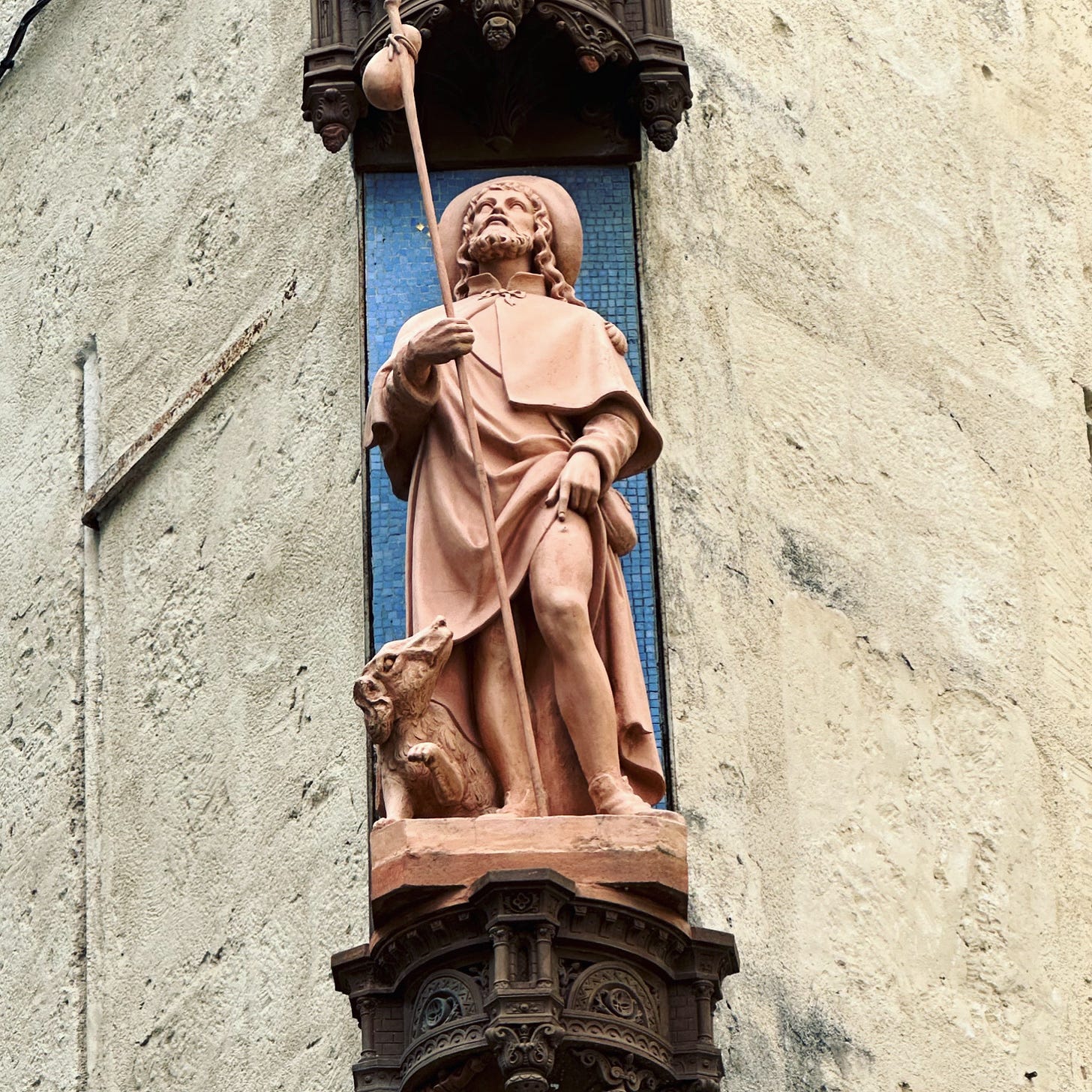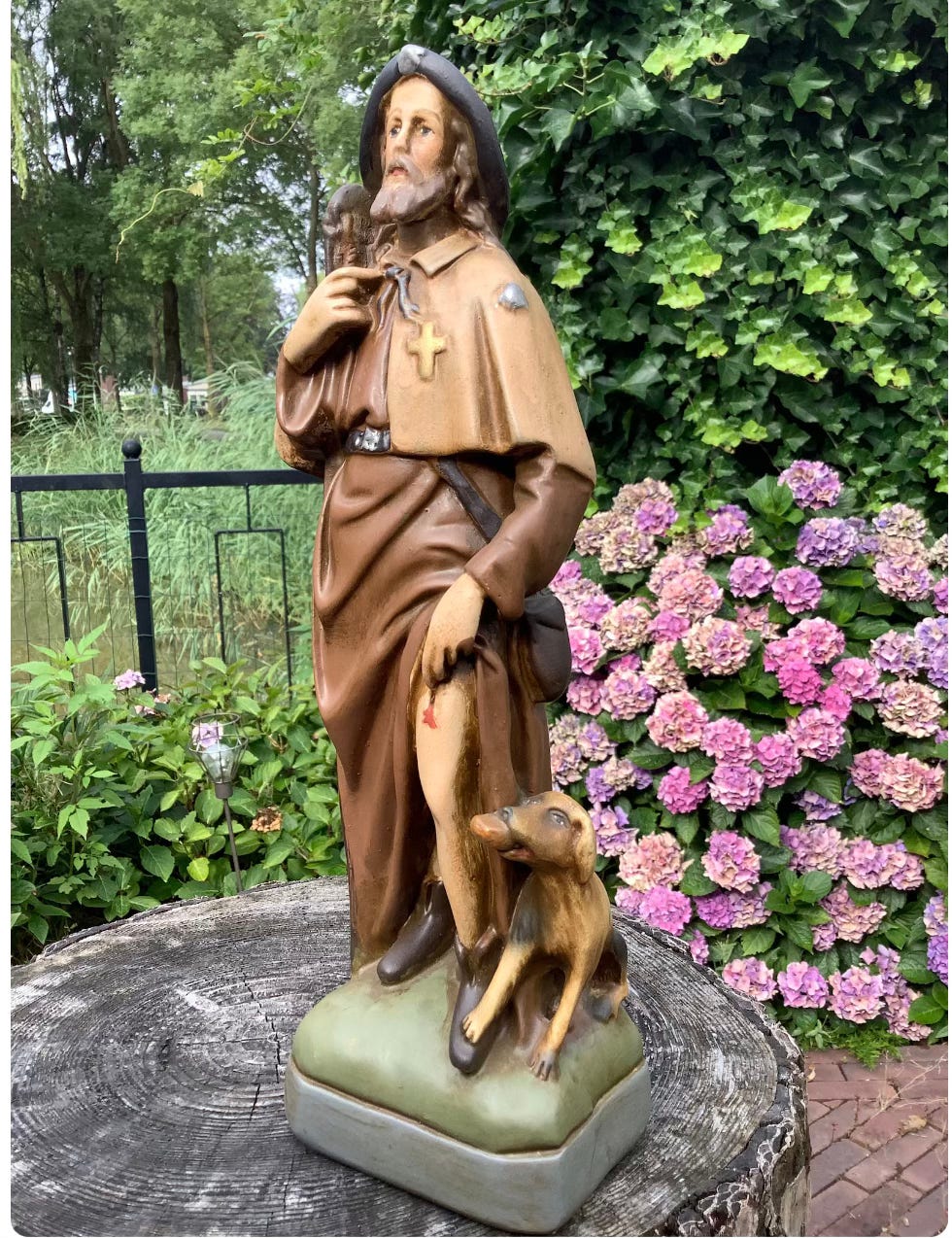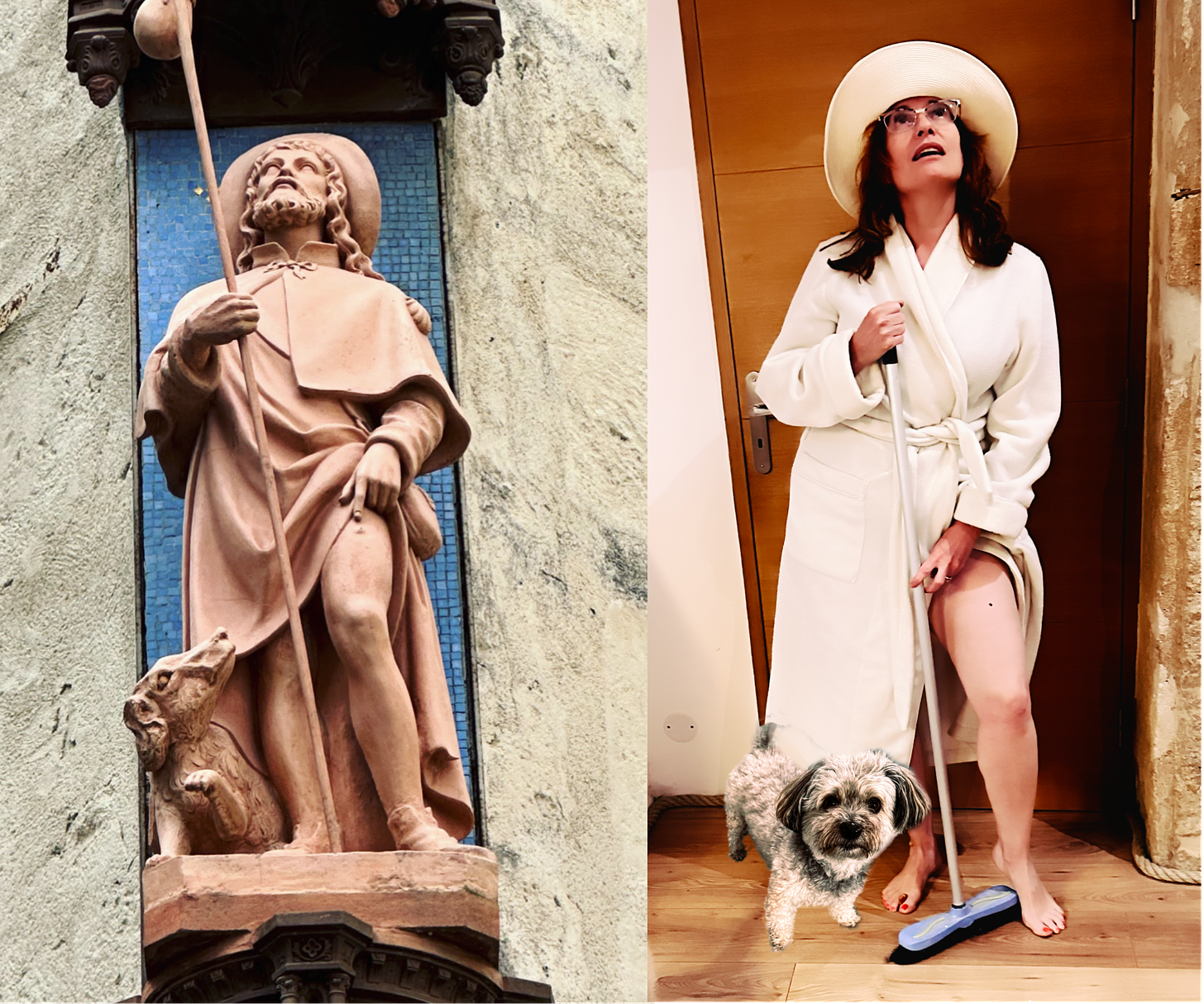At the bottom of our street in Montpellier an intriguing saint gazes up from the corner. A dog is on his right side and he is offering a saucy glimpse of his thigh. This is St. Roch, the patron saint of our French town (and many others).
St. Roch (pronounced roke) was born in the late 13th century in Montpellier to a wealthy family. Legend has it that after studying medicine he abandoned his wealth and lived as a pilgrim, traveling to Italy during a plague outbreak. He dedicated himself to caring for the sick, miraculously curing many of them. Inevitably, one day he contracted the plague himself, and he retreated to the forest to die alone.
According to the story, a dog found Roch and brought him bread to eat, licking his wounds, which miraculously healed (what is the name of the dog and why wasn’t HE sainted? Roberto says if there were a dog church he would definitely be born again.)
Roch returned to Montpellier but was unrecognizable due to his illness. He was arrested as a spy and thrown into prison. He never told anyone his name (pilgrams were supposed to remain anonymous). He died in solitary confinement. Now that’s what I call a martyr.
In art Roch is often depicted with a dog licking his wounds or carrying a loaf of bread. He is considered the patron saint of dogs, bachelors, surgeons, pilgrims, epidemics, and get this . . . knee problems. So if you are a single doctor with Covid who owns a dog with knee problems, this is your guy.
St. Roch's feast day is celebrated on August 16th. Many churches and hospitals are dedicated to him, and his glorification remains strong all over the world.
Over the last twenty years a handful of scholars have questioned the validity of the story of St. Roch. One article says, “the lack of ‘materiality’ of this relatively recent saint: no burial neither in Montpellier nor in Voghera where he died, no writings, no reported words, no contemporary witnesses . . . It even seems that the transfers of relics concerning him present many implausibilities and even modifications of dates in the archives consulted!”
Roberto and I first learned of this growing doubt from our walking tour with the wonderful guide and storyteller, Benoît Ramos.
I can’t say that I am surprised by this new skepticism. Studying art history made me a cynic. I once wrote a paper on relics and how towns would claim they had a finger or toe of a saint, encase it in a bejeweled container, and then charge pilgrams money to see it. Relics brought a lot of traffic to villages that might otherwise be ignored (think World’s Largest Ball of Twine).
One of the craziest (and cringe-inducing) examples ever has to be “The Holy Prepuce,” which is (supposedly) a piece of foreskin removed during Jesus’s circumcision. At least 18 churches in Europe have claimed to possess this tiny bit of the crown jewels starting from the year 800. (We can see a smilar racket today with Trump memorabilia. A letter that he sent to Mikhail Gorbachev in 1988 sold for $20,000. Think of what a hair from his golden head encased in glass would bring.)
Despite my cynicsm, I feel that St. Roch is perfect for us. He was saved by a dog, looks out for the sick, and likes to stick his leg out like Angelina Jolie at the Oscars.
Does your town have a patron saint? What’s the best relic you have ever seen?
Jusqu’à la prochaine fois (until next time)
Carolyn & Roberto









Yall gotta check out this song by my pal Creekbed Carter - its about the relic trade!!!
https://youtu.be/mFgj-bCtrtg?si=04TtcRM2wLuG4kty
Love the photo re-creation!